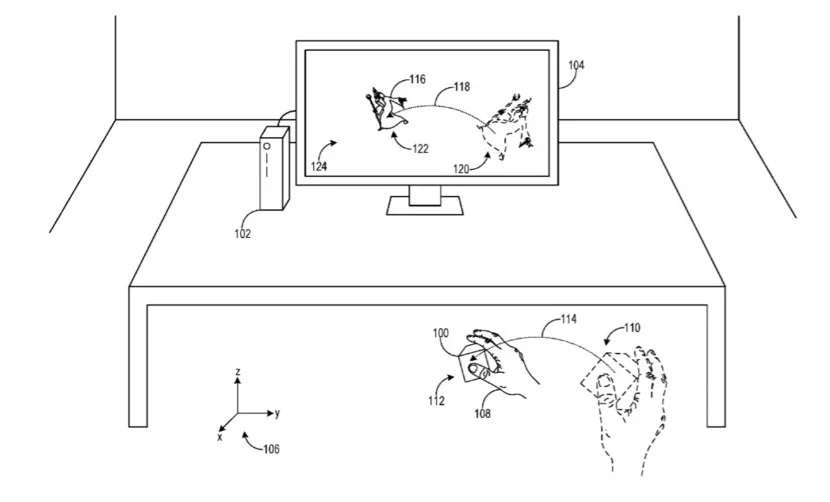Microsoft has published (via WalkingCat) two virtual reality-related patents that look to innovate the way users move in imaginary space. The first, a ‘Virtual Reality Floor Mat Active Region' was filed on February 4th, 2018 and published yesterday.
It's essentially what it sounds like: a user places a physical mat on the floor to easily determine how far they can move without bumping into objects. This something users have traditionally had to set up themselves. The mat may contain ‘fiducial markers' for headsets that use inside-out tracking (cameras on the headset) for movement.
However, it gets more interesting. In some variations of the device, the mat is littered with pressure sensors. As a result, inside-out tracking could pair with pressure on the mat to accurately determine where the user is.
The device could additionally contain vibration motors so users can get physical feedback from their actions. This could be when they near the edge of the play area, for example, or even when they step on checkpoints or traps in a game. An interior region of the mat would additionally have a different surface to its border to further warn users.
It's an intriguing idea, to say the least. It's somewhat similar to ProxiMat, a device that promises ‘touch and visual' feedback when a user near the edge. Microsoft's mat appears to be bigger, however, and multi-featured.
A Motion Controller with Six Degrees of Freedom
The second device is a controller with six degrees of freedom. That is, it can move with a body up/down, left/right, and backward/forward. This one hedges its bets a lot more in its description, describing a system that includes an input device, sensor system, and communication interface. The controller, according to Microsoft, would be configured to:
“Transmit, via the communication interface, output based on sensor data from the sensor system for use in controlling an application in a first mode in which each of the six degrees-of-freedom is used as input, the application being controlled in the first mode in response to detecting a first condition; and transmit, via the communication interface, output based on sensor data from the sensor system for use in controlling the application in a second mode in which one or more of the six degrees-of-freedom is not used as input, the application being controlled in the second mode in response to detecting a second condition different from the first condition.”
This one was filed on March 30th, 2018 and was also published yesterday. The patent also describes paring the controller with gesture input.
As always, these patents aren't guaranteed to make it to market. Technical hurdles, costs, consumer demand, and many more factors can get in the way of bringing one to market. However, with Microsoft so far focused primarily on augmented reality, it's interesting to see its ideas for an entirely virtual world.







